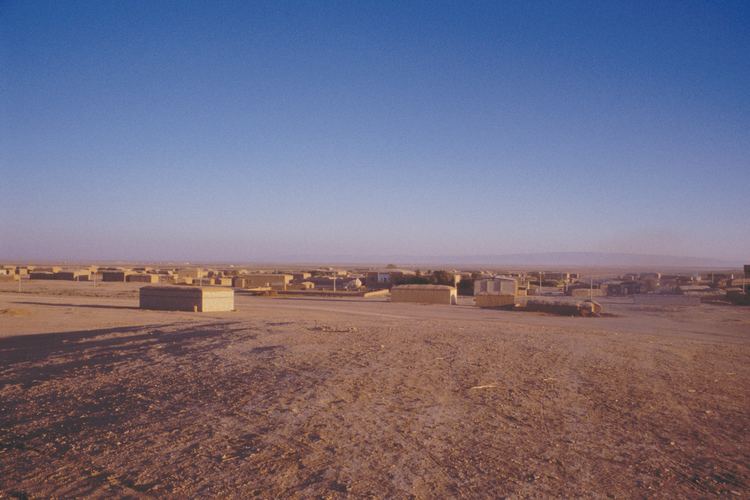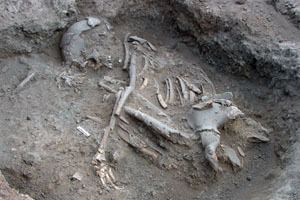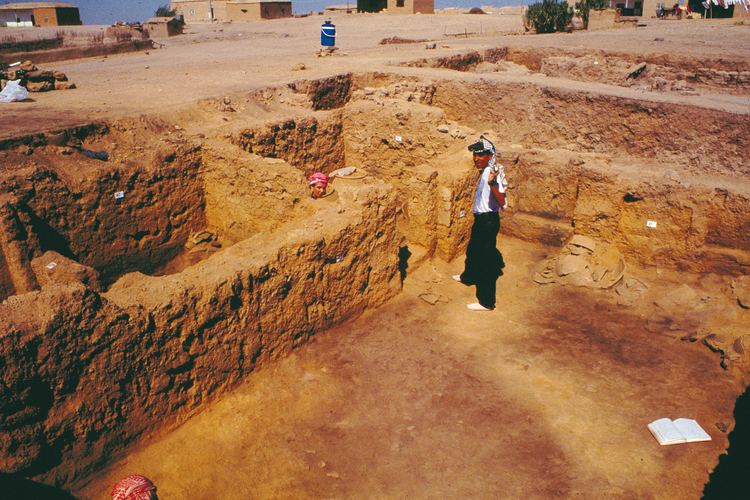Region Al-Hasakah Governorate | ||
 | ||
Hamoukar (in Arabic: حموكار) is a large archaeological site located in the Jazira region of northeastern Syria (Al Hasakah Governorate), near the Iraqi and Turkish borders. The early settlement dates back to the 5th millennium BCE, and it existed simultaneously with the Ubaid and the early Uruk cultures. It was a big centre of obsidian production. In the 3rd millennium, this was one of the largest cities of Northern Mesopotamia, and extended to 105 ha.
Contents

Hamoukar
History

It is now believed that Hamoukar was thriving as far back as 4000 BC and independently from Sumer. The origins of urban settlements has generally been attributed to the riverine societies of southern Mesopotamia (in what is now southern Iraq). This is the area of ancient Sumer, where around 4000 BC the Mesopotamian cities such of Ur and Uruk emerged. In 2007, following the discoveries at Hamoukar, some archaeologists have argued that the Cradle of Civilization could have extended further up the Tigris River and included the part of northern Syria where Hamoukar is located.
The city flourished before the invention of writing. It also featured specialization of labor.

Other contemporary early sites in this area are Chagar Bazar, Tell Arbid, and the multi-period site of Tell Brak.
Archaeology

Excavation by a joint Syrian-American expedition (by the Oriental Institute of the University of Chicago and the Syrian Directorate General of Antiquities) has been conducted since 1999.

Thousands of clay sealings have been found on the site, indicating the existence of a complex bureaucratic system before the invention of writing. These sealings were once used to lock doors or containers and were impressed with stamp seals.
Obsidian
Large quantities of obsidian were found on the site, indicating the existence of the obsidian production facilities of both weapons and tools. The volcanic rock of this type does not occur in Hamoukar area, so it must have been imported. The nearest deposits are located in the area of Mount Nemrut (today's Turkey), about 170 km north of the city. This is confirmed by chemical analysis of the obsidian.
The findings were a surprise for many archaeologists, since they indicate the existence of independent trading networks in the northern Mesopotamia outside of the influence of southern cities, such as Ur and Uruk.
The obsidian workshops were spread across a large area of 280 hectares. They were in use as early as 4500 BC.
The town lay on an important trade route between Anatolia and southern Mesopotamia. Many Nineveh 5 period artifacts (early 3rd millennium) were found. The city also flourished during the later Akkadian Empire.
Eye Idols made of alabaster or bone have been found in Tell Hamoukar. Eye Idols have also been found in Tell Brak, the biggest settlement from Syria's Late Chalcolithic period.
Earliest urban warfare
Excavation work undertaken in 2005 and 2006 has shown that this city was destroyed around 3500 BC. This may be the evidence of the earliest urban warfare attested so far in the archaeological record of the Near East. Slings and thousands of clay bullets have been found -- evidence of the siege that the city endured. Contained excavations in 2008 and 2010 tried to expand on that.
The city could have fallen victim to the Uruk expansion around 3500 BC. There are remains of an Uruk trading colony in the area.
Yet, according to the archaeologist Clemens Reichel, the evidence of who exactly was responsible for the destruction of Hamoukar is not entirely clear, since the Uruk trading colony was probably also destroyed at the same time as the big battle was taking place.
